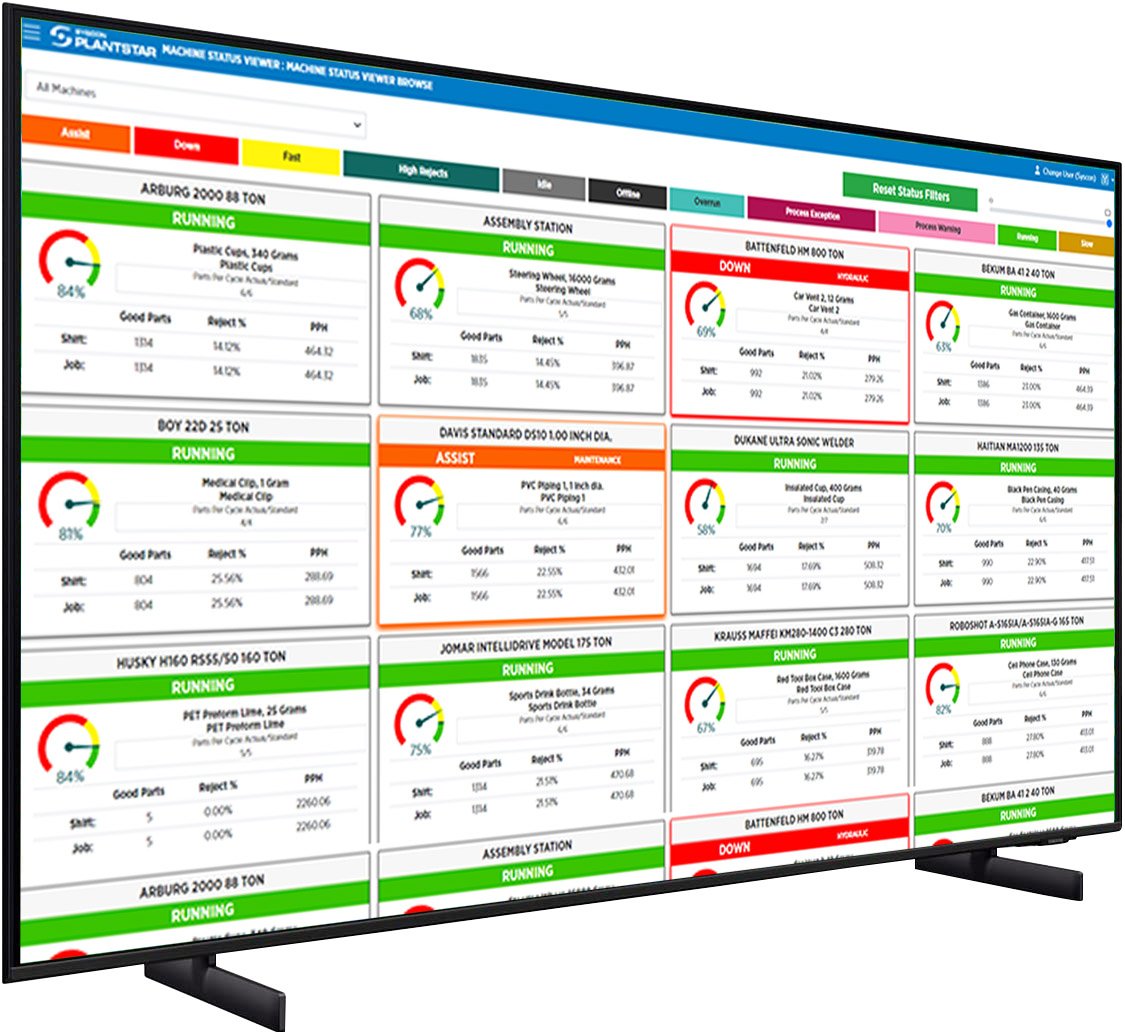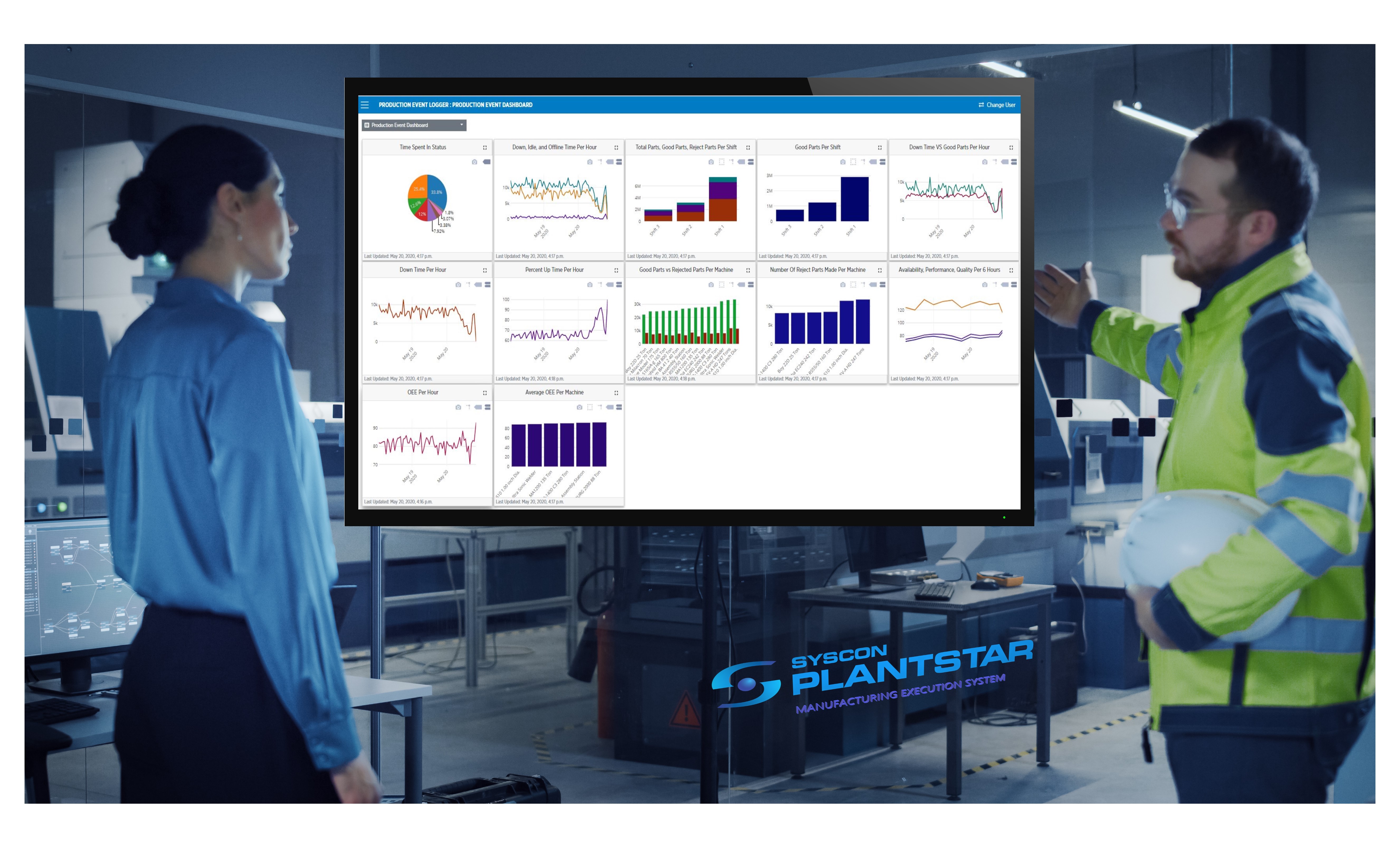SYSCON PlantStar BLOG
Why Your Company Needs More Visibility into the Factory Floor
Jul 22, 2022 4:30:00 PM / by PlantStar Team

Historically, managers tracked production run performance by jotting notes on Post-it notes. Spreadsheets monitored the status of supply chain materials. Logbooks recorded how often machines were serviced. Nowadays, suppliers have much more efficient ways to oversee their production line and data collection processes, and a key piece is their Manufacturing Execution Systems (MES).
Legacy solutions were limited because their cumbersome input and usage requirements limited visibility. Personnel only had a good view into how a production run was operating after it was completed. What they desired was a view during it. To deliver the latter, vendors had to create solutions that collect information as events take place, correlate it, and deliver the data information to a variety of devices. Such capabilities now exist.
Technical advances, such as cloud, the Internet of Things (IoT), data analytics, and artificial intelligence and machine learning, have come at a rapid pace recently. These new tools, the foundation for Industry 4.0 factories, empower manufacturers, so they dramatically improve manufacturing processes.
MES: A Key Piece
One more piece is needed: an MES. Suppliers must do more than generate performance information. The data has to be stored in a common place and have a standard format, so many systems and employees can leverage it. Manufacturers need to deploy MES software, like PlantStar, to perform that function. This enterprise system acts as a hub providing real-time production monitoring, synchronization, and analysis of plant equipment, supplies, and manufacturing personnel.
By combining MES with plant floor sensors, suppliers collect real-time data that can be leveraged to improve processes and make manufacturing operations more efficient. Vendors have been adding analytics, so employees correlate information and make changes that positively impact the manufacturing process. There are a number of benefits that come with increased visibility on the factory floor.
Track Goods More Closely
Visibility allows suppliers to track and trace goods from the supply chain to the factory floor to in-transit and finally to delivery. They gain a clear snapshot of global inventories no matter what stage of the journey they are on. Greater visibility empowers them to improve transit times, reduce errors, increase productivity, enhance quality control, and lower costs.
Avoid Delays and Disruptions
Historically, suppliers managed reactively, responding to supply chain and plant floor shortfalls after they arose. With today’s real-time data, they anticipate delays and take steps, like rerouting shipments, to ensure that such problems have a limited impact.
Gain Agility
Nowadays, knowledge is power. Once you have access to supply chain and manufacturing data, you make decisions based on what’s happening in the moment rather than the past. The results improve the business in many potential areas, raise quality, lower defects, reduce waste, and maximize personnel productivity by improving scheduling and reducing labor costs.
Improve Customer Satisfaction
Customer expectations continue to rise. With the new solutions, you provide clients with information, like real-time shipment data. With it, they make adjustments as needed. Real-time visibility provides insights into the manufacturing process. In addition, you identify problems quickly and easily, no matter where your cargo is in the system. Suppliers can also program their systems to generate alerts that provide transparency to the customer, so they better understand the status of their order.
Gain Working Capital
To manage the variability of supply and demand, many companies add inventory buffers for procured materials, intermediates, and finished goods. Typically, they determine inventory requirements by applying rules of thumb unsupported by data and statistics. Because they lack real insight into material variability, companies are unwilling to reduce inventory levels, or sometimes, they pursue only superficial reductions. Supply chain and manufacturing performance data provide them with the ability to calculate their true inventory needs. Having a solid understanding of fluctuations empowers them to make deep inventory reductions and generate more working capital.
Reduce Manufacturing Errors
IoT-enabled quality control systems provide real-time visibility and monitoring of production processes. These systems detect issues early on and provide information to personnel so that they can take corrective action. This is a significant improvement over traditional quality control methods, which often relied on manual inspection of finished products. With IoT, quality control can be built into the production process itself, resulting in better quality control and fewer defective products.
For instance, replacing manual inspection business models with AI-powered visual insights results in process improvements reduces manufacturing errors, and saves money and time. With a minimal investment, quality control personnel connect their smartphone to the cloud, so they monitor the manufacturing production line from virtually anywhere. By applying machine learning algorithms, manufacturers detect errors immediately, rather than at later stages when such repair work is more expensive.
For decades, suppliers struggled to manage the manufacturing process proactively. They were constantly behind where they wanted to be. Today's technology, and the emergence of Industry 4.0 facilities, change that storyline. Technology now delivers real-time data, so they gain visibility into what is happening in the supply chain, on the production line, and with their shipments. Therefore, they are able to take steps to minimize problems and maximize efficiencies and compete more effectively in today’s highly volatile manufacturing industry sector.

Schedule A Demo
Topics: mes solutions
Subscribe to Email Updates
Posts by Topic
- Manufacturing Execution Systems (34)
- manufacturing solutions (16)
- MES 101 (12)
- Industry 4.0 (10)
- improve efficiency (9)
- mes software (9)
- mes solutions (9)
- Plastic Molding (8)
- Plastics Technology (8)
- Shop Floor Production (8)
- MES hardware (7)
- digital transformation (7)
- Reduce scrap (6)
- data-driven-decisions (6)
- lean manufacturing (6)
- process monitoring (5)
- product quality (5)
- Medical molding (4)
- lights-out manufacturing (4)
- manufacturing dashboard (4)
- production monitoring (4)
- Shop Floor Safety (3)
- supply chain management (3)
- ERP integration (2)
- Injection Molding Technology (2)
- defect collection (2)
- machine mes (2)
- process variables (2)
- digital strategy (1)
- labor gap (1)
- throughput (1)


